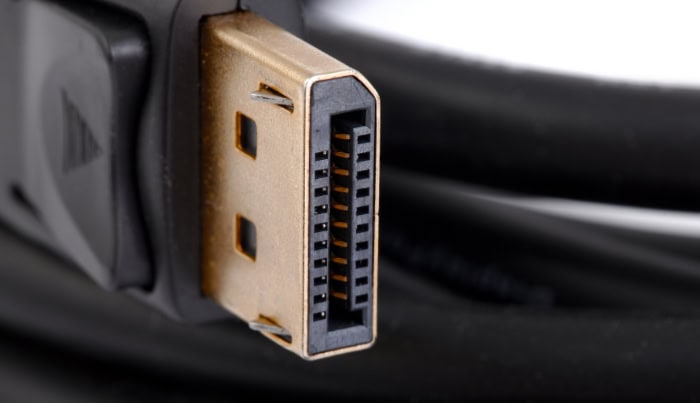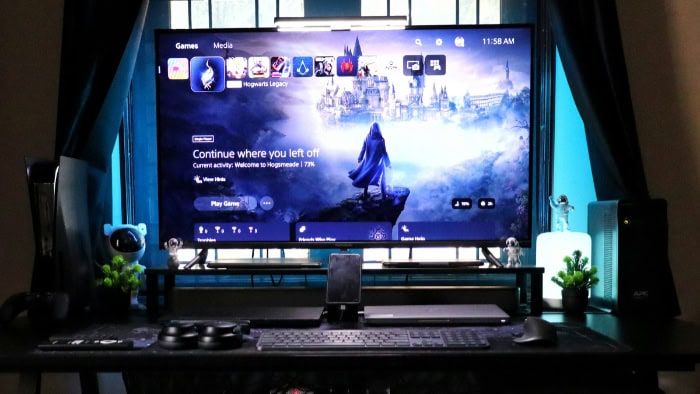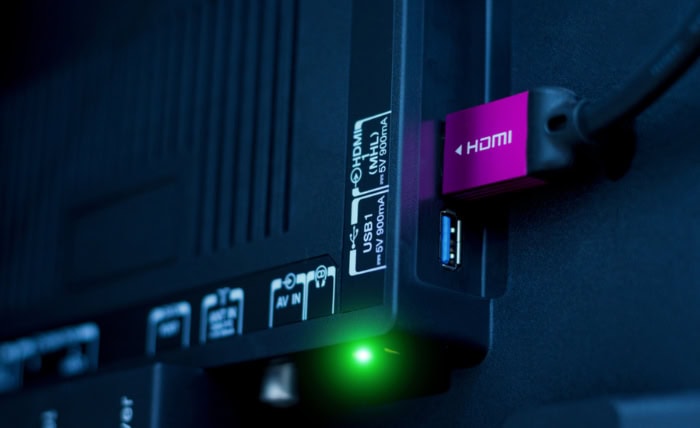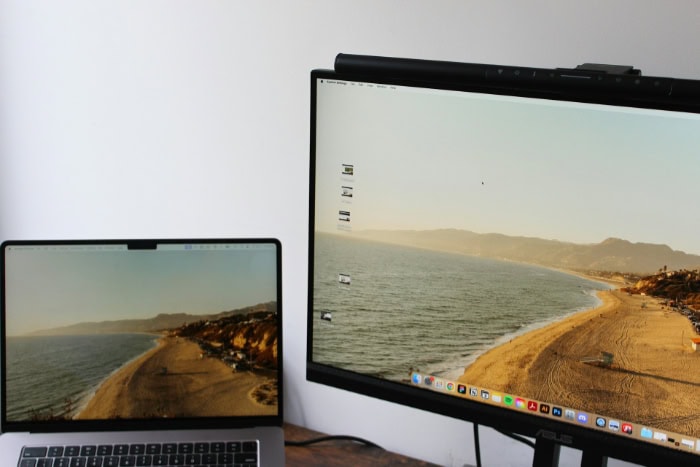DisplayPort 1.4 vs. HDMI 2.1: Which One Wins the Crown?

Display interfaces are the backbone of modern gaming, productivity, and entertainment systems, determining how effectively visuals and audio are delivered to your screen. With advancements in technology, choosing the right connection standard can directly impact your experience, especially with the rise of high refresh rates, 4K resolutions, and HDR capabilities.
HDMI 2.1 and DisplayPort 1.4 are two leading contenders in this space, each tailored to specific needs.
Core Technical Differences
DisplayPort 1.4 and HDMI 2.1 stand apart in the technical specifications that define their abilities to handle modern visual and audio technologies. These differences primarily revolve around bandwidth, compression requirements, and their support for native versus compressed output.
Bandwidth
Bandwidth dictates how much data can be transmitted through a connection, which directly impacts the resolution, refresh rate, and overall visual quality. HDMI 2.1 offers a raw bandwidth of 48 Gbps, making it the superior option for handling high-resolution, high-frame-rate content.
This enhanced capacity enables seamless support for features like 4K at ultra-high refresh rates or even 8K performance, making it suitable for next-generation devices and displays.
DisplayPort 1.4, on the other hand, delivers a raw bandwidth of 32.4 Gbps. While lower than HDMI 2.1, it is still powerful enough to accommodate high-end gaming and professional setups.
With additional efficiency provided by Display Stream Compression (DSC), DisplayPort 1.4 can manage demanding display requirements despite the reduced bandwidth.
Compression Requirements
Compression plays a vital role when the bandwidth of the interface isn’t enough to handle the desired resolution and refresh rate natively. HDMI 2.1 can manage 4K at an incredible 240Hz using a light 2:1 DSC method. This achieves superior performance while minimizing visual quality loss.
Additionally, HDMI 2.1’s robust bandwidth often eliminates the need for compression altogether in many use cases, including 4K at 120Hz.
DisplayPort 1.4, in contrast, requires a more aggressive 3:1 DSC to deliver 4K at 144Hz. This higher compression ratio slightly compromises image fidelity, though it’s often imperceptible to the average viewer.
For most users, this tradeoff allows DisplayPort to provide similar capabilities as HDMI 2.1 without exceeding its bandwidth limitations.
Native vs. Compressed Output
One of HDMI 2.1’s standout advantages lies in its ability to support native 4K at 120Hz, producing uncompressed visuals at this high refresh rate. This feature is particularly valuable for console gamers and users connecting to high-end TVs, where maintaining pristine image quality is critical.
DisplayPort 1.4 relies more heavily on compressed output for higher refresh rates. While capable of impressive performance levels, such as 4K at 120Hz or 144Hz, it requires DSC to achieve these milestones.
For gamers or professionals who prioritize raw image fidelity without compression, this can be a consideration, but for most users, DisplayPort 1.4 still offers ample performance for fluid visuals and detailed resolutions.
Gaming Performance Breakdown

Gaming performance heavily depends on how well a display interface can handle high resolutions, fast refresh rates, and adaptive sync technologies. The choice between HDMI 2.1 and DisplayPort 1.4 becomes particularly important depending on your gaming setup, whether you're using a console, PC, or a combination of both.
Console Gaming
For console gamers, HDMI 2.1 is an absolute necessity. Both the PlayStation 5 and Xbox Series X rely on this interface to deliver their maximum potential, including 4K at 120Hz gameplay.
HDMI 2.1 not only supports the required bandwidth for these resolutions and refresh rates but also offers additional features like Auto Low Latency Mode (ALLM) and Variable Refresh Rate (VRR), which enhance the gaming experience on compatible TVs. These features ensure smoother gameplay with reduced input lag and eliminated screen tearing, especially in graphically intensive games.
In contrast, DisplayPort is not an option for console users. Current-gen consoles lack DisplayPort support entirely, making HDMI 2.1 the dominant choice for connecting to modern TVs and gaming monitors.
This absence also underlines HDMI’s focus on the living room experience, where consoles and large screens typically dominate.
PC Gaming
PC gamers face a different scenario. DisplayPort 1.4 is widely regarded as the go-to connection for desktop gaming setups, especially for high-refresh-rate monitors.
Its ability to handle 1440p at 240Hz or even higher refresh rates makes it perfect for competitive gamers who prioritize ultra-smooth action and responsiveness. Additionally, DisplayPort's widespread adoption across gaming monitors and GPUs creates a flexible ecosystem for those focused on performance.
HDMI 2.1, however, has emerged as a strong contender in the PC space, particularly for those who game on high-end TVs or 4K monitors with HDR. Its higher bandwidth enables native 4K at 120Hz without compression, making it ideal for visually stunning single-player titles that demand both sharp resolution and vivid colors.
While DisplayPort remains the preferred option for multi-monitor setups and certain features like Multi-Stream Transport (MST), HDMI 2.1 increasingly appeals to PC gamers seeking a more cinematic display experience.
Adaptive Sync Technologies
Adaptive sync technologies play a crucial role in eliminating screen tearing and stuttering during gameplay. HDMI 2.1 brings HDMI Forum VRR, an adaptive sync standard tuned for TV gaming.
This makes it the perfect match for gamers using consoles or PCs with compatible TVs. The seamless integration of VRR ensures smoother gameplay, even when frame rates fluctuate in fast-paced or graphically demanding scenes.
DisplayPort 1.4, on the other hand, leverages its support for Adaptive-Sync, which is the underlying technology for AMD FreeSync and NVIDIA G-Sync Compatible displays. This ensures broader compatibility with gaming monitors, which often use these technologies to provide a tear-free gaming experience.
For PC gamers using monitors, DisplayPort 1.4 edges out HDMI 2.1 due to its wider support for these adaptive sync standards.
Feature and Ecosystem Support

The additional features and ecosystem support offered by HDMI 2.1 and DisplayPort 1.4 play a significant role in shaping the overall user experience. While both standards deliver strong performance for video and audio transmission, differences in HDR handling, audio capabilities, and specialized features make each one better suited for particular scenarios.
HDR Capabilities
High Dynamic Range (HDR) has become a must-have for modern entertainment, offering richer colors, better contrast, and more lifelike visuals. HDMI 2.1 supports Dynamic HDR, a technology that adjusts brightness, color, and contrast dynamically on a scene-by-scene or even frame-by-frame basis.
This granular level of control ensures that every moment, whether in movies, games, or other content, looks as vibrant and accurate as possible. Dynamic HDR is a significant advantage for users with compatible TVs and projectors, as it enhances the visual experience across a wide range of media.
DisplayPort 1.4, while capable of handling HDR content, is limited to Static HDR10. Unlike Dynamic HDR, Static HDR applies a single set of settings across the entire piece of content.
While this still delivers noticeable improvements over SDR (Standard Dynamic Range), it lacks the adaptability of HDMI 2.1’s approach. This makes DisplayPort 1.4 perfectly adequate for many users but less suited for those who want the absolute best HDR performance.
Audio Support
Audio performance is another area where HDMI 2.1 shines. Its support for Enhanced Audio Return Channel (eARC) allows for high-quality, uncompressed audio formats like Dolby Atmos and DTS:X.
This feature is particularly beneficial for home theater setups, where rich, immersive sound is just as important as stunning visuals. HDMI 2.1's ability to deliver lossless audio ensures that users can enjoy a cinematic experience without compromise.
DisplayPort, in comparison, offers basic audio pass-through capabilities. While this is sufficient for transmitting sound to most monitors or speakers, it lacks the advanced features that come with HDMI 2.1.
Users looking to incorporate high-end audio solutions into their setups may find DisplayPort’s audio limitations a drawback, especially when compared to the robust audio options provided by HDMI.
Specialized Features
Both HDMI 2.1 and DisplayPort 1.4 include specialized features that cater to different use cases, enhancing their appeal for specific types of users. For example, HDMI 2.1 includes Auto Low Latency Mode (ALLM), which automatically switches compatible TVs to a low-latency mode when gaming.
This feature ensures a smoother and more responsive experience, particularly for console gamers who rely on TVs for their primary display.
DisplayPort 1.4, on the other hand, excels in features tailored to multi-monitor setups, such as Multi-Stream Transport (MST). MST allows users to connect multiple monitors using a single DisplayPort output, making it a favorite among professionals and gamers who use extensive multi-monitor configurations.
This is a major advantage for PC users looking to maximize productivity or create immersive gaming environments.
Device Compatibility and Use Cases

Choosing between HDMI 2.1 and DisplayPort 1.4 often comes down to the devices in your setup and how each connection standard aligns with their capabilities. From living room consoles and TVs to high-performance PCs, laptops, and handheld gaming devices, both interfaces cater to distinct ecosystems.
Consoles and TVs
HDMI 2.1 firmly holds its place in the console and TV ecosystem, offering seamless compatibility and advanced features tailored for home entertainment. Both the PlayStation 5 and Xbox Series X rely exclusively on HDMI 2.1 for their high-resolution, high-refresh-rate output.
Its higher bandwidth and features like Auto Low Latency Mode (ALLM) and Enhanced Audio Return Channel (eARC) ensure a premium gaming and viewing experience when connected to compatible TVs.
Televisions, in particular, are heavily optimized for HDMI. Modern TV manufacturers prioritize HDMI 2.1 ports over alternatives, given its widespread adoption and ability to support cutting-edge technologies, such as 4K at 120Hz, Dolby Atmos, and HDR.
This has cemented HDMI 2.1's status as the standard for living room setups, making it the primary choice for console gamers and those looking to integrate gaming systems with home theater audio equipment.
PCs and Monitors
PC gaming and professional setups benefit from the flexibility and performance of DisplayPort 1.4. Graphics cards and monitors commonly include DisplayPort connections, highlighting its dominance in this space. DisplayPort 1.4 is especially popular among gamers and professionals who use high-refresh-rate monitors or multiple displays.
Its Multi-Stream Transport (MST) functionality simplifies dual or triple monitor setups, reducing cable clutter and improving productivity.
Driver-level stability and support for Adaptive-Sync technologies also make DisplayPort 1.4 a preferred choice for many PC users. With its ability to handle resolutions like 1440p at 240Hz or 4K at 144Hz (with DSC compression), DisplayPort is well-suited for gamers who demand fast response times and fluid visuals.
Although HDMI 2.1 is making strides in the PC space, it still lacks the multi-monitor versatility and ecosystem maturity of DisplayPort.
Laptops and Handhelds
Portable devices like laptops and handheld gaming systems present another scenario where DisplayPort's features stand out. Many modern laptops and ultrabooks rely on DisplayPort for video output through USB-C.
This streamlined integration is not only space-saving but also allows these devices to support high resolutions and refresh rates without requiring a dedicated HDMI port. Handheld gaming devices, such as the Steam Deck, also use USB-C with DisplayPort compatibility to connect to external monitors, further showcasing the adaptability of this standard.
HDMI 2.1 remains relatively rare in portable devices. While some high-end gaming laptops include HDMI 2.1 ports for 4K HDR gaming on TVs, USB-C’s compact design and versatile capabilities often make it the preferred option for device manufacturers.
As a result, DisplayPort via USB-C remains the more consistent choice for portable setups, while HDMI 2.1 shines primarily in scenarios involving larger screens and home entertainment.
Conclusion
HDMI 2.1 and DisplayPort 1.4 each bring unique strengths to the table, making them well-suited for different setups and preferences. HDMI 2.1 stands out as the go-to choice for console gamers and home entertainment enthusiasts, offering seamless compatibility with TVs and advanced features like eARC, ALLM, and Dynamic HDR.
Meanwhile, DisplayPort 1.4 excels in PC-centric environments, providing robust support for high-refresh-rate monitors, multi-monitor configurations, and versatility through USB-C integration.
The choice between the two often boils down to the devices being used and the intended application. HDMI 2.1’s dominance in consoles and TVs contrasts with DisplayPort 1.4’s widespread adoption in PCs, monitors, and portable systems.
Each standard has been designed to meet the demands of its respective ecosystem, ensuring that users can enjoy excellent performance tailored to their specific needs.


